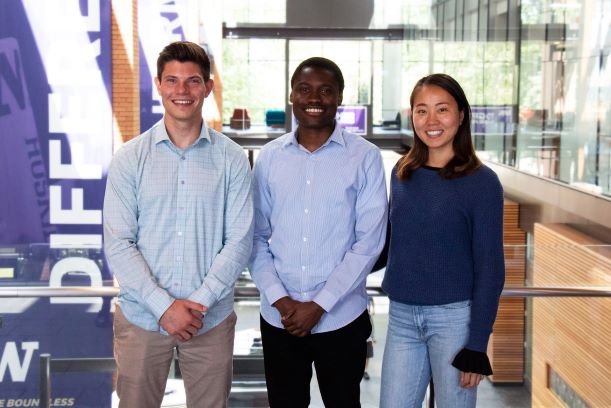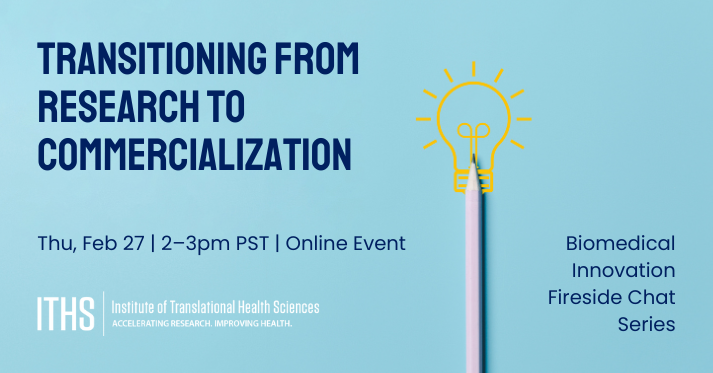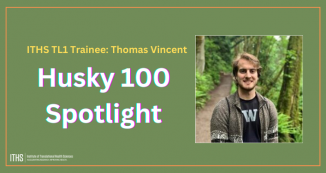
01 Aug Five-Weeks In and Thriving: Commercialization Fellowship Projects
Every summer ITHS and the Washington Research Foundation (WRF) provide graduate students an opportunity to experience the process of building a commercialization plan for a promising technology through the Summer Commercialization Fellowship Program. Students come from all types of backgrounds and experiences ―from business, engineering, health sciences, information science to international relations and law― and are paired with investigators, from CoMotion, Seattle Children’s or Fred Hutch, who are developing new technologies.
This year, the program has three fellows who are passionate about accelerating research and improving health! Vivian Wei, Fred Yeboah and Jacob Nazarian share a mutual drive for technology, science and business and are already making their mark halfway through the program.
For a total of ten weeks, these three students will dive into real-life work, learning how to collaborate effectively with colleagues from other disciplines, figuring out the complexities and challenges within their projects and working with technology inventors to deliver a final presentation at the end of August, with a recommendation for next steps in their business plan. Here are their innovative and exciting projects:
1. Vivian Wei / Operating Room Business Intelligence System (ORBIS)
Summer fellow and MBA student Vivian Wei is working with Christie Fong, an MS Informatics Engineer in the Department of Anesthesia and Pain Medicine. Along with their CoMotion Technology Manager Laura Dorsey, they are developing technology to reduce the rate of preventable errors as well as the $30 billion annual cost of operating room ineffiencies through an application called ORBIS (Operating Room Business Intelligence System). This software integrates data from multiple electronic systems and other ancillary applications into a single platform to perform advanced data analytics and reporting to improve efficiency, operation, quality, safety and cost containment.
“My interests are in technology and healthcare so the ORBIS was a good fit for me,” Wei said. “The system was developed to improve operating room efficiency and now I’m looking into who the actual end users will be.”
2. Jacob Nazarian / VascuSight – 3D Ultrasound Monitoring of Critically Ill Patients
Ultrasound is widely employed as an imaging tool used across a spectrum of medical disciplines to define the size, shape and mass of tissues and organs inside the body. It is safe and painless for patients. Dr. Shahram Aarabi, former Medical Director of UW Vascular Surgery, and Dr. Dan Leotta of UW Applied Physics are developing a 3D ultrasound monitor and software called VascuSight that will allow for automated evaluation of a patient’s circulating blood volume. This will allow for real-time evaluation to guide the treatment and resuscitation of critically ill patients – whether in the field, in the ER, in the ICU, or in the operating room. VascuSight will measure central venous morphology and blood flow changes over time. The device will be portable, easy to use, non-invasive, and low-cost. Commercialization Fellow Jacob Nazarian, who just earned his Masters of Applied Bioengineering, is working with the team to identify the best near term and long-term markets for this technology and to define an initial business plan outline.
“There are lot of different things you need to figure out like what the costs of making the device will be, what the FDA regulatory path is likely to be, and what types of clinical studies that will need to be done for regulatory or marketing reasons,” Nazarian said. “Also, as I’m learning, not every physician sees a benefit from what this device would offer, so I need to figure out which physicians are interested and why.”
3. Fred Yeboah /Alchemy: Taking Poop and Making it into Gold
In hospitals across the country, fecal matter transplants of donor materials have become an increasingly standard treatment for many otherwise incurable infections as well as a host of other conditions by restoring the composition of microorganisms in the gut, the microbiome, back to proper balance. Recent research has suggested that preparing samples of one own gut microorganisms, an autologous fecal matter transplant, before procedures that disrupt the gut microbiome such as broad-spectrum antibiotics or chemotherapy would be the ideal treatment. However, current methods and infrastructure are not up to the task of providing timely point-of-care treatment of autologous fecal matter transplants. A team of UW researchers and medical experts, including Dr.Tom Lendvay, founder of UW spinout C-SATS, have developed a point of care processing device to take fecal matter and transform into a safe, ready to ingest form with a minimum of hands-on steps. Summer Fellow Fred Yeboah, a PhD student in Molecular and Cellular Biology, is working with Dr. Lendevay and CoMotion Technology Manager Ryan Buck Master to explore market opportunities and help develop a commercialization strategy for a planned spinout.
“The reason I chose UW for my graduate work was the opportunity here to learn business skills while also developing as a scientist,” Yeboah told us. “It’s challenging because we only have 10 weeks to look at so many different aspects of our projects. You learn a lot in a short amount of time.”
All three are glad to be gaining knowledge and experience of the challenges and opportunities to be found at the intersection of health sciences and business. We are excited to see the progress of these projects and our summer commercialization fellows in the next five weeks and beyond!
To learn more about these projects or the ITHS & WRF Summer Commercialization Fellowship Program, visit https://www.iths.org/education/graduate/commercialization-fellowship/ or contact Terri L. Butler, Ph.D. at tlbutler@uw.edu.







